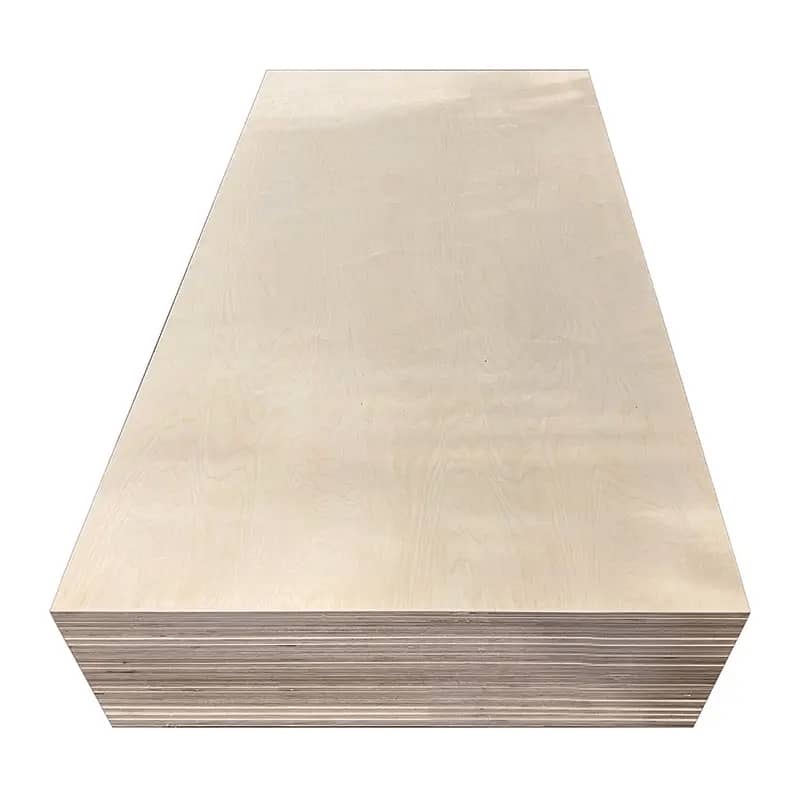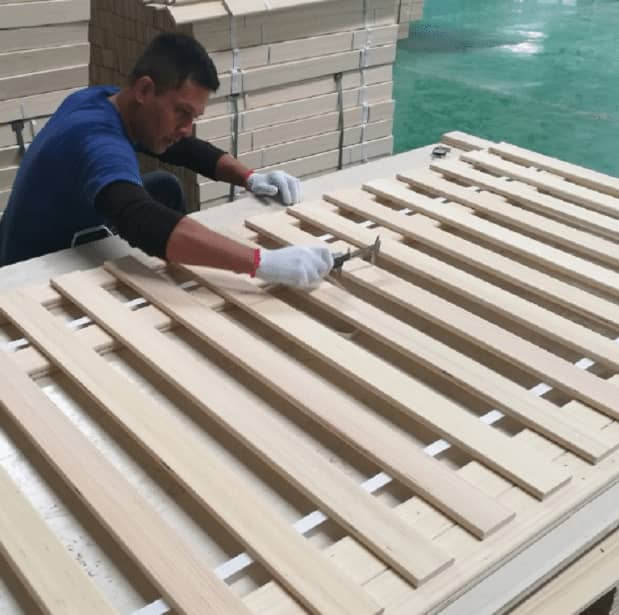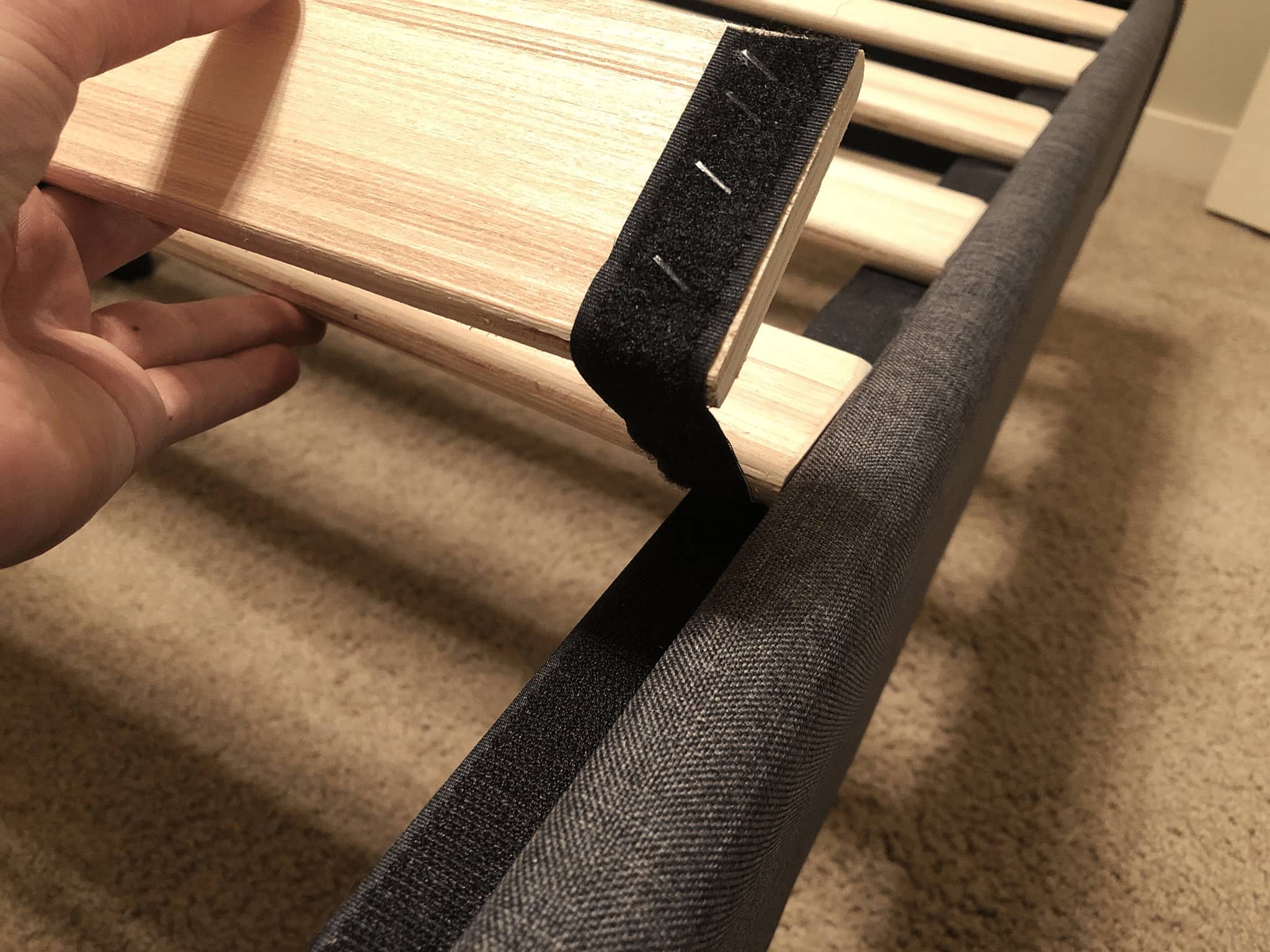The Unsinkable Truth: Your Complete Guide to Marine Plywood
Marine plywood, often called the “gold standard” for moist environments, stands apart from its construction-grade counterparts. While both are engineered wood panels, marine plywood boasts superior water resistance, making it the preferred choice for boat building, outdoor furniture, and any project exposed to the elements. This comprehensive guide delves deep into the world of marine plywood, exploring its unique properties, applications, advantages, and the factors to consider when choosing the perfect sheet for your next project.

What Makes Marine Plywood “Marine”?
The key to marine plywood’s resilience lies in its construction. Unlike standard plywood, which may use interior-grade glues susceptible to moisture damage, marine plywood utilizes waterproof adhesives throughout its core. This ensures the layers of veneer remain tightly bonded even when exposed to prolonged moisture, preventing delamination and rot.
Here’s a closer look at the key features that set marine plywood apart:
- Waterproof Adhesives: Marine plywood utilizes specially formulated adhesives, typically phenolic resins or other types of moisture-resistant adhesives, that resist water penetration and maintain their bond strength even in wet conditions. These adhesives are designed to create a permanent bond between the veneer layers, preventing them from separating or delaminating even after prolonged exposure to water.
- Durable Wood Species: Marine plywood is typically manufactured using high-quality hardwood veneers known for their natural resistance to decay and moisture damage. Common species include Douglas fir, Western Larch, and Meranti, all prized for their strength, durability, and ability to withstand the rigors of marine environments. These species are naturally resistant to rot, decay, and insect infestation, further enhancing the plywood’s longevity.
- Void-Free Core: Unlike some construction plywood that may have voids or gaps in the inner layers, marine plywood features a void-free core. This means every layer of veneer is tightly bonded to the next, leaving no space for water to penetrate and cause internal rot or delamination. This solid core construction contributes to the plywood’s structural integrity and dimensional stability, ensuring it remains flat and resists warping even in humid conditions.
- Consistent Thickness and Density: Marine plywood undergoes rigorous manufacturing processes to ensure consistent thickness and density throughout the sheet. This uniformity is crucial for applications where dimensional stability and a smooth, predictable surface are essential, such as boat hulls and decks. The consistent thickness and density also contribute to the plywood’s strength-to-weight ratio, making it strong yet relatively lightweight.
Diving Deep: Exploring the Applications of Marine Plywood
While its name suggests a life at sea, marine plywood’s applications extend far beyond boat building. Its exceptional moisture resistance and durability make it a versatile material for various projects, both indoors and outdoors.
Here’s a glimpse into some of its most common applications:
- Boat Building: Marine plywood is the backbone of countless boats, from small dinghies and kayaks to large yachts and sailboats. Its strength, lightweight, and resistance to water make it ideal for hulls, decks, bulkheads, transoms, and other structural components that need to withstand the constant stress and exposure of the marine environment.
- Target User: Boat builders, both amateur and professional, rely on marine plywood for its reliability and performance in boat construction.
- Advantages in Boat Building: Its buoyancy, resistance to rot and marine borers, and ability to be shaped into curved structures make it indispensable in this field.
- Outdoor Furniture: Benches, tables, planters, Adirondack chairs, and even playground equipment built with marine plywood can withstand years of exposure to rain, sun, and humidity without rotting or delaminating. Its durability and weather resistance make it an excellent choice for outdoor projects that need to last.
- Target User: DIY enthusiasts, furniture makers, and anyone looking to build durable and weather-resistant outdoor furniture.
- Advantages in Outdoor Furniture: Its ability to withstand the elements, resist rot and insect damage, and hold up to heavy use makes it ideal for outdoor furniture.
- Dock Construction: Docks and piers constantly exposed to water require materials that can withstand constant moisture and the elements. Marine plywood’s exceptional water resistance and structural integrity make it a reliable choice for building long-lasting and durable docks, ensuring they can withstand the constant exposure to water, marine life, and weather conditions.
- Target User: Contractors specializing in marine construction, waterfront property owners, and anyone building structures exposed to water.
- Advantages in Dock Construction: Its load-bearing capacity, resistance to rot and marine borers, and ability to withstand the corrosive effects of saltwater make it a top choice.
- Exterior Siding: In humid climates or coastal regions, marine plywood can be used as a durable and moisture-resistant alternative to traditional wood siding. Its ability to withstand the elements, resist warping and shrinking, and provide a smooth, paintable surface makes it a suitable choice for exterior applications where moisture resistance is paramount.
- Target User: Homeowners, builders, and architects seeking a durable and moisture-resistant siding option for homes in challenging climates.
- Advantages in Exterior Siding: Provides a stable substrate for siding materials, resists moisture damage, and offers design flexibility.
- Bathroom and Kitchen Applications: Marine plywood’s resistance to moisture and humidity makes it an excellent choice for bathroom vanities, kitchen cabinets, and other areas prone to moisture. Its stability and durability ensure these structures remain intact and resist warping or swelling, even in humid environments.
- Target User: Homeowners, remodelers, and contractors looking for a moisture-resistant material for bathroom and kitchen projects.
- Advantages in Bathroom and Kitchen Applications: Resists water damage, provides a stable base for countertops and sinks, and offers a clean, finished look.
- Signboards and Outdoor Signage: Signs exposed to the elements require materials that can withstand rain, sun, and temperature fluctuations without warping, fading, or deteriorating. Marine plywood’s durability and resistance to weathering make it a suitable choice for creating long-lasting and weather-resistant signs, ensuring they remain legible and visually appealing for years to come.
- Target User: Sign makers, businesses, and organizations needing durable and weather-resistant signage for outdoor use.
- Advantages in Signboards and Outdoor Signage: Provides a smooth, paintable surface, resists warping and weathering, and offers long-lasting durability.
Weighing the Options: Advantages and Disadvantages of Marine Plywood
Like any building material, marine plywood comes with its own set of advantages and disadvantages. Understanding these trade-offs is crucial for making informed decisions about its suitability for your project.
| Advantages | Disadvantages |
|---|---|
| Exceptional Water Resistance: Withstands prolonged exposure to moisture without delaminating or rotting, making it ideal for marine and outdoor applications. Its waterproof adhesives and tightly bonded layers create a barrier against water penetration, preventing damage and ensuring longevity. | Higher Cost: Marine plywood is generally more expensive than construction-grade plywood due to the higher quality materials and manufacturing processes involved. However, its longevity and performance often outweigh the initial cost difference in demanding applications where moisture resistance and durability are critical. |
| Durable and Long-Lasting: Its robust construction and resistance to moisture, decay, and insects contribute to a longer lifespan than standard plywood, reducing the need for frequent replacements. This durability makes it a cost-effective choice in the long run, especially for projects exposed to harsh conditions. | Limited Availability: Marine plywood may not be as readily available as construction-grade plywood in all locations, especially in areas far from coastal regions. It’s essential to check with local suppliers to determine availability and lead times, and factor in potential shipping costs. |
| Strong and Stable: Offers excellent strength-to-weight ratio, making it suitable for structural applications while remaining relatively lightweight and easy to work with. This combination of strength and workability makes it a versatile material for various projects, from boat building to furniture making. | Requires Specific Finishing Techniques: While marine plywood can be painted or varnished, it requires specific finishing techniques to ensure proper adhesion and long-lasting protection. Consult with paint and finish manufacturers for recommendations on products compatible with marine plywood and follow their application instructions carefully. |
| Versatile Applications: Suitable for a wide range of projects, from boat building and outdoor furniture to interior applications in moisture-prone areas. Its versatility stems from its unique combination of properties, making it a reliable choice for projects demanding both moisture resistance and structural integrity. | Susceptible to Scratches and Dents: While durable, marine plywood’s surface can be susceptible to scratches and dents, especially if not adequately protected. Consider using protective coatings or finishes to enhance its durability and maintain its appearance, especially for high-traffic areas or applications where aesthetics are important. |
| Environmentally Friendly Options Available: Some manufacturers offer marine plywood made with sustainably harvested wood and formaldehyde-free adhesives, making it a more eco-friendly choice for those concerned about environmental impact. Look for certifications like FSC (Forest Stewardship Council) to ensure the wood is sourced from responsibly managed forests. |
Making the Right Choice: Factors to Consider When Selecting Marine Plywood
Choosing the right marine plywood for your project involves considering several factors to ensure you select a material that meets your specific needs and budget:
- Plywood Grade: Marine plywood is typically graded based on the quality of its face and back veneers, similar to construction plywood. However, all layers of marine plywood use waterproof glue, regardless of the face veneer grade.
- A-A: Both faces are smooth and virtually free of imperfections, making them suitable for natural finishes like varnish or oil, where the wood grain will be visible. This grade is also suitable for painting if a flawless finish is desired.
- A-B: One face is smooth (A-grade), while the other has minor imperfections (B-grade). This grade is a cost-effective option when only one finished face is required, such as for furniture where the back will be hidden.
- B-B: Both faces have minor imperfections but are still suitable for painting or covering with other materials, such as laminate or veneer. This grade is a budget-friendly option when the appearance of the plywood itself is not a primary concern.
- Wood Species: Different wood species offer varying levels of strength, durability, and resistance to decay and marine borers. Consider the specific requirements of your project and the environment in which the plywood will be used.
- Douglas Fir: A strong and durable softwood with good resistance to decay, commonly used for structural components in boat building, dock construction, and outdoor furniture. It’s known for its straight grain, relatively lightweight, and good workability.
- Western Larch: A hardwood known for its exceptional strength, durability, and natural resistance to decay and insects, making it an excellent choice for demanding applications like boat hulls, docks, and outdoor structures. It’s denser and harder than Douglas fir, offering superior strength and durability.
- Meranti: A tropical hardwood prized for its beautiful grain pattern and resistance to moisture and decay. It’s often used for furniture, cabinetry, and decorative applications where its aesthetic appeal is desired. Meranti is generally less readily available than Douglas fir or Western Larch and may be more expensive.
- Thickness: Plywood thickness is measured in inches and directly relates to its strength and stiffness. Thicker plywood is generally stronger and can span larger distances without sagging, but it’s also heavier and more expensive. Consider the structural requirements of your project and the intended use when selecting the appropriate thickness.
- Exposure Rating: Marine plywood is typically rated for exterior exposure, but some manufacturers offer specific ratings for different levels of moisture exposure. Choose a rating that aligns with the anticipated exposure conditions of your project.
- Exterior: Suitable for general outdoor use and occasional exposure to moisture, such as for outdoor furniture, planters, and some siding applications.
- Marine Grade: Designed for prolonged exposure to water and harsh marine environments, making it the ideal choice for boat building, dock construction, and other applications where constant water contact is expected.
- Formaldehyde Content: Some marine plywood is manufactured with formaldehyde-free adhesives, making it a healthier and more environmentally friendly option, especially for indoor applications or enclosed spaces. If indoor air quality is a concern, look for plywood labeled as “formaldehyde-free” or “low-formaldehyde.”
FAQs: Addressing Common Queries About Marine Plywood
1. Can I use regular plywood for outdoor projects instead of marine plywood?
While regular plywood might seem cost-effective initially, it’s not designed for prolonged moisture exposure. Using it outdoors risks delamination, rot, and a significantly shorter lifespan. Marine plywood’s specialized construction ensures long-term performance in demanding environments, making it a worthwhile investment for outdoor projects.
2. Is marine plywood completely waterproof?
Marine plywood is highly water-resistant but not entirely waterproof. While its adhesives and wood species resist water penetration, prolonged submersion can eventually lead to some water absorption. For applications involving constant submersion, additional protective measures like epoxy coatings are recommended.
3. How do I maintain and care for marine plywood?
Regular cleaning with mild soap and water removes dirt and grime. Applying a marine-grade varnish or paint every few years helps maintain its appearance and provides an extra layer of protection against the elements. Inspecting for any signs of damage and addressing them promptly ensures its longevity.
4. Can I use marine plywood for interior applications?
Absolutely! Its moisture resistance makes it ideal for humid areas like bathrooms and kitchens. Additionally, its strength and stability make it suitable for cabinetry, shelving, and other interior projects where durability is desired.
5. Where can I purchase marine plywood?
Marine plywood is typically available at lumberyards, marine supply stores, and some larger home improvement centers. When purchasing, inquire about the wood species, grade, and exposure rating to ensure you select the right type for your project.
Conclusion: Navigating the Waters of Marine Plywood
Choosing the right building materials can make or break your project, especially when moisture and durability are paramount. Marine plywood, with its exceptional water resistance, strength, and versatility, stands as a reliable choice for countless applications. By understanding its unique properties, applications, and the factors to consider when selecting the right sheet, you can confidently embark on your next project, knowing your creation will withstand the test of time and the elements.



